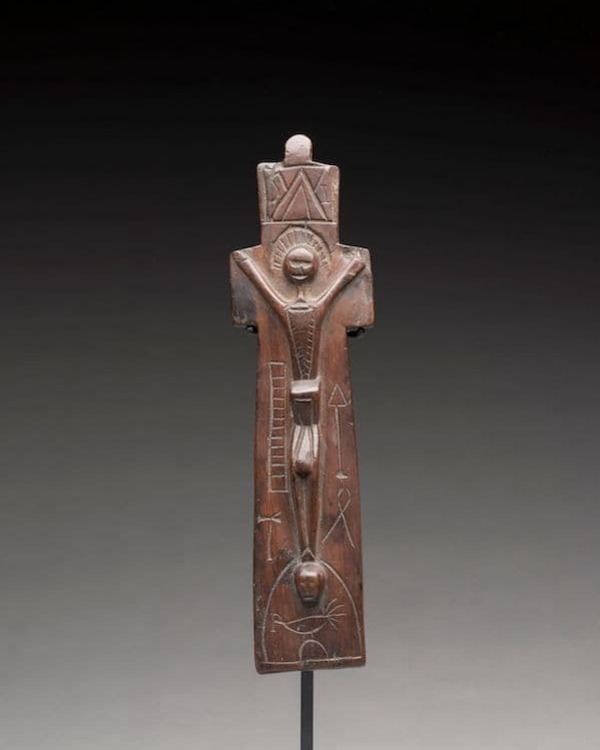Irish Penal Cross
Due to their wood-carved nature, primitive appearance, and location, penal crosses like this one were often falsely identified as Native American art pieces. This particular cross was originally presumed to be Native American “possibly Iroquois,” because seven crosses with the same general style were found in the Munsee Delaware region. Further investigation, however, revealed that large quantities of this style of cross were made by rural artisans in 18th-century Ireland and later carried overseas by 19th-century Irish immigrants. Catholics had to make a pilgrimage to Lough Derg, the location of St. Patrick’s purgatory, to purchase one of these crosses. The ‘1776’ carved onto the back of this piece represents the year it was purchased by one of the pilgrims who visited the shrine.
The penal style of cross gets its name from Irish history. The period of penal laws — which were first enacted in 1763 and not fully rescinded until 1920 — imposed restrictions on Roman Catholics after the Reformation. While the laws did not prohibit Catholics from practicing their faith, they made it much more difficult to do so. Priests had to register to preach and practicing Catholics were not allowed to vote, hold office, own property, teach, or own horses. Despite these deterrents, many continued to practice their faith.
This particular penal cross is quite small, measuring at 8 x 2 1/8 x 7/8 inches. With the shorter post and cross piece, it would have been able to fit inside someone’s sleeve, although it is not clear whether it was specifically designed to be hidden — and not all penal crosses were this discrete.
This crucifix was made of yew wood and features a Christ figure with various other carvings on the front. The carvings include a spear, a ladder, and a skull symbolizing Golgotha, commonly referred to as the ‘place of skulls’ where Jesus is said to have been crucified. At the bottom of the cross is a rooster, which has often been interpreted as a symbol for the story of Saint Peter who denied Christ three times, after which he heard a rooster crow. On the back there are additional carvings, including what appear to be nails (another item of the passion) and the year 1776—the date the crucifix was originally purchased.
This cross was a gift of Reverend James S. Savage and is currently located in the Snite Museum of Art.
